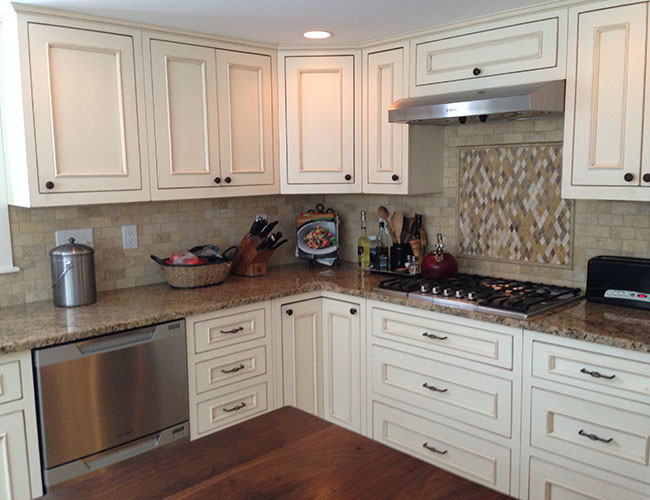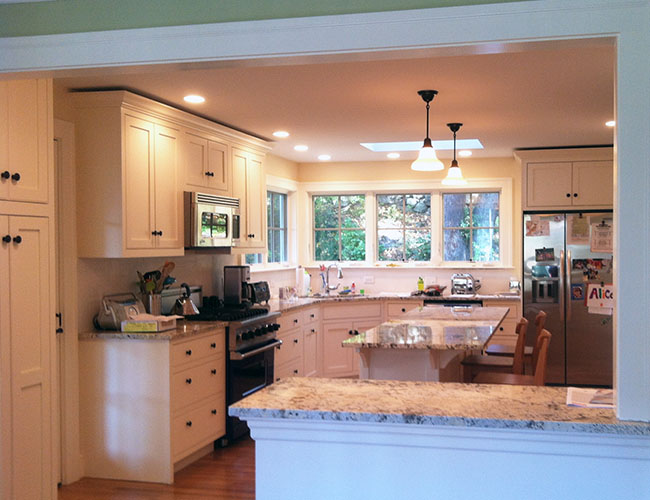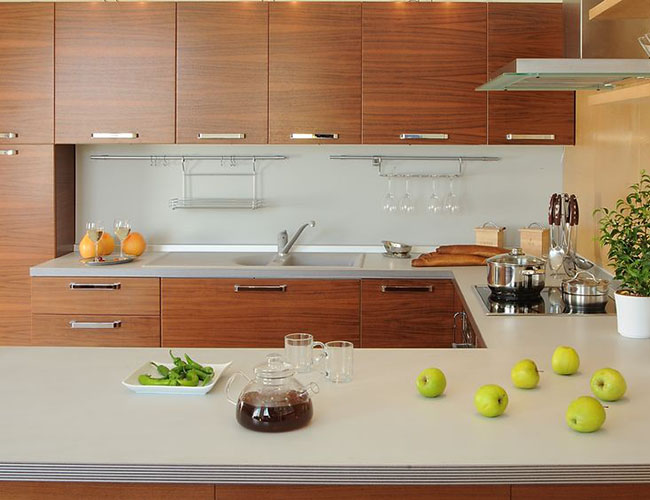Styles
Traditional style takes its inspiration from the past.
It is characterized by moldings and furniture-style details, conveying a feeling of warmth and comfort. For more information, see the article, "15 Elements of a Traditional Kitchen"
Transitional style strikes a balance between traditional and contemporary.
Some of the details and warmth of traditional style are retained, but in a more understated way, with minimal accents. This article has more information about transitional kitchen design.
Contemporary style is characterized by bold, clean lines and minimal details.
Ornamentation is minimal, and “less is more." For more details, see "6 Elements of a Contemporary Kitchen."
“Kitchen design from the comfort of home! You can now work with one of our designers remotely to create your kitchen layout. ”
Framed or frameless cabinets?
Face-frame cabinets have a solid wood facing (usually 3/4” x 1-1/2”) surrounding the door and drawer openings. This facing is applied to the cabinet box (or carcass), which is made of either particleboard or plywood panels. These panels vary in thickness from 3/8” to 3/4”, depending on the manufacturer and application. With face-frame cabinets, there is a choice of inset, full-overlay, or partial-overlay doors, giving the cabinet a more traditional look than frameless. Hinges and drawer glides are attached to the solid wood face frame.
Frameless cabinets, also called European or 32mm, have no facings and always use full overlay doors and drawers. The box is 1/2” to 3/4” thick, made of particleboard or plywood, and joined by dowels and glue. Because there is no face frame protruding into the box opening, access to cabinet interiors is unrestricted and drawers will be one inch wider than face frame cabinets. All hinges and drawer glides are mounted to the inside of the cabinet walls.
A good quality cabinet made in either style will perform equally well. Be sure to compare the thickness of shelving and box parts. BBR recommends shelving that is at least 11/16” thick in either plywood or particleboard. The box construction we recommend for face frame cabinets is a minimum of 3/8” sides, bottoms, and backs. For frameless, we recommend at least 11/16”.
Drawer construction
Drawers take a lot of wear and tear, and, thus, it is worth investing in the best quality you can afford. A solid hardwood drawer with dovetail joints and a plywood bottom is the best option. The next best would be solid wood with a rabbet or butt joint. Least desirable is stapled particleboard.
There are also “metabox” drawers available in frameless cabinets. These have enamel-coated steel drawer sides that also act as the drawer glide. They typically have a 1/2” thick particleboard bottom and back.
There are different options for drawer glides as well. Most drawer glides will hold up to 100 pounds and have a lifetime warranty. Drawers on standard 24” deep base cabinets are typically 21” deep, but only extend 15” beyond the cabinet front. A full-extension glide pulls the drawer out completely to the cabinet front. Full-extension glides are particularly useful on deep pot-and-pan drawers. Most moderate- and high-quality cabinets use under-mount rather than side-mount glides. Under-mount glides are invisible when the drawer is open and they allow for a wider (but shallower) drawer than side-mount glides. Tandem style under-mount drawer glides are the smoothest and quietest drawer glides. They are available in both standard and full extension and offer a soft-close feature.












